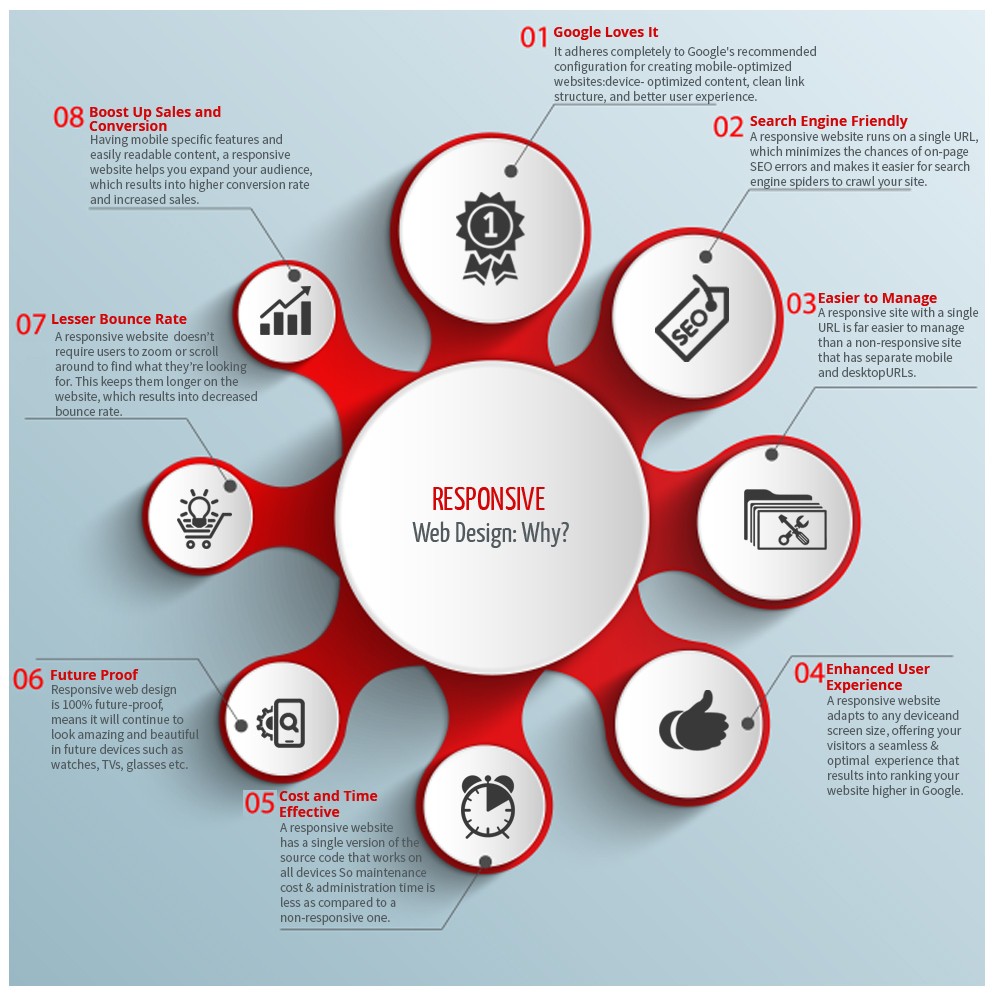Site Design Fundamentals: Tips For Structure A User-Friendly Website
Site Design Fundamentals: Tips For Structure A User-Friendly Website
Blog Article
Content Author-Christophersen Bak
When it pertains to web site style, guaranteeing user-friendliness is essential. From receptive design to structured navigating, every aspect plays an important role in developing a site that caters to your target market's needs. But what about the finer details that can make or damage a user's browsing experience? Keep tuned as we reveal some often-overlooked suggestions that can boost your internet site's functionality to the following degree, making it genuinely stand apart in the digital landscape.
Value of Responsive Design
Receptive layout is a vital facet of contemporary website advancement. Ensuring your website is receptive methods that it can adapt to different screen dimensions and tools, giving a smooth experience for individuals.
With the enhancing use mobile phones and tablets to access the net, having a responsive style is necessary for reaching a bigger audience. It helps in enhancing user experience by making your site very easy to navigate and continue reading any kind of tool.
In addition, responsive layout can favorably affect your internet search engine rankings, as online search engine like Google focus on mobile-friendly websites. By having a responsive design, you're also future-proofing your site, as brand-new gadgets with varying screen dimensions remain to arise.
Simplify Navigating Framework
To improve customer experience and assist in simple accessibility to information on your website, streamlining the navigating framework is extremely important. When developing https://pamplinmedia.com/pt/9-news/550776-440875-fiery-fatal-rollover-crash-under-investigation-in-hillsboro , concentrate on developing a clear and instinctive navigating menu that helps site visitors discover what they're searching for rapidly.
Limitation the variety of menu items to the essentials, organizing related pages with each other to avoid frustrating customers. Use detailed labels that clearly suggest the material of each web page, making it much easier for users to understand where each link will take them.
Consider executing dropdown menus for subcategories to prevent jumbling the primary navigation bar. In addition, include a search bar plainly on the page for users who favor searching for certain details.
Prioritize mobile responsiveness in your navigating design to guarantee simple accessibility on all gadgets.
Optimize Web Page Tons Rate
Improving web page tons speed is important for preserving site visitors on your web site. Slow-loading web pages frustrate users and can cause high bounce prices. To maximize web page load rate, begin by enhancing pictures. Compress pictures without endangering quality to reduce their data sizes.
Furthermore, enable browser caching to save frequently accessed sources locally, quickening tons times for returning visitors. Minify CSS, JavaScript, and HTML files by eliminating unneeded characters, comments, and formatting, boosting lots rate.
Consider making use of a web content delivery network (CDN) to disperse your internet site's material across several servers worldwide, minimizing latency for customers accessing your website from different places. Lastly, limit the use of third-party manuscripts and plugins, as they can substantially influence tons times.
Final thought
Finally, by including receptive style, simplifying navigating, and optimizing web page load speed, you can produce an easy to use internet site that attract a larger audience and enhances individual experience. mouse click the up coming post guarantee that site visitors can conveniently gain access to and browse your site throughout different tools, causing boosted interaction and fulfillment. By focusing on these crucial elements, you can develop a successful internet site that keeps customers coming back for more.
